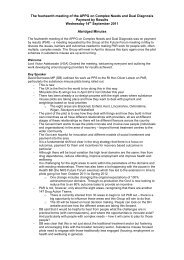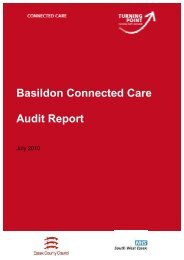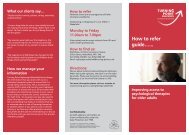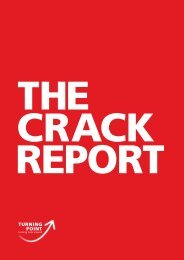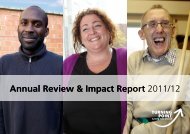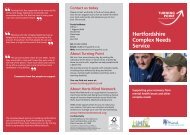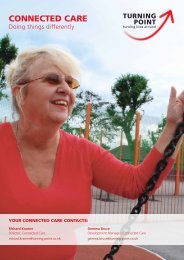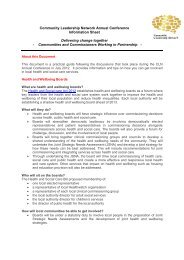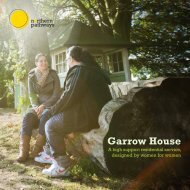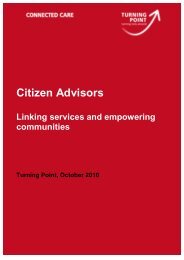Learning Disability Emerging Plan - Turning Point
Learning Disability Emerging Plan - Turning Point
Learning Disability Emerging Plan - Turning Point
You also want an ePaper? Increase the reach of your titles
YUMPU automatically turns print PDFs into web optimized ePapers that Google loves.
<strong>Turning</strong> <strong>Point</strong> <strong>Learning</strong> <strong>Disability</strong> <strong>Emerging</strong> <strong>Plan</strong> 2013 - 2016challenge faced by the sector which must be addressed as 20-25% of young people currently in transition fromchildren to adult services are from BME communities iv . Access for this group was flagged as a priority in ValuingPeople Now which stated that 75% of people within this group are struggling without support. It is often saidthat this group face ‘double discrimination’ as they experience ‘insufficient and inappropriate services causedby policy and services are not always culturally sensitive.’ Wrong assumptions about what certain ethnic group’svalue are made and language barriers are not overcome. This means that they face discrimination in terms ofboth ethnicity and disability v .Many people from BME groups are unsure of what services are available for them and services are ill-equipped toaddress this barrier.Overall, trends indicate that vi :• n The estimated average annual increase in the need for social care services for adults with learningdisabilities over the period 2011 – 2030 is 3.2% (varying from 1.2% to 5.1% depending on theFairs Access to Care (FACs) criteria applied.) This equates to between an additional ‘49,000 to116,000 adults with learning disabilities over the next ten years’• n Approximately 25% of new entrants to adult social care with learning disabilities will belong tominority ethnic communities• n Approximately one in three of new entrants will come from a home in which the child is eligible forFree School Meals• n By 2030 the number of adults aged 70+ using social care services for people with a learningdisability will more than double indicating a rise from 1,900 in 2011 to 5,000 in 2030For all estimates the annual percentage growth rate slows from 2011-2018/19 at which point it stabilises – apattern reflecting changes in birth rates over the last twenty years.TURNING POINT’S PERSPECTIVE:We should ensure that we are flexible enough to reach out and offer supportto people from all backgrounds. Especially as we have staff who understandpotential cultural and religious needs. We will focus on offering a wide range ofsupport to people from BME communities.6



